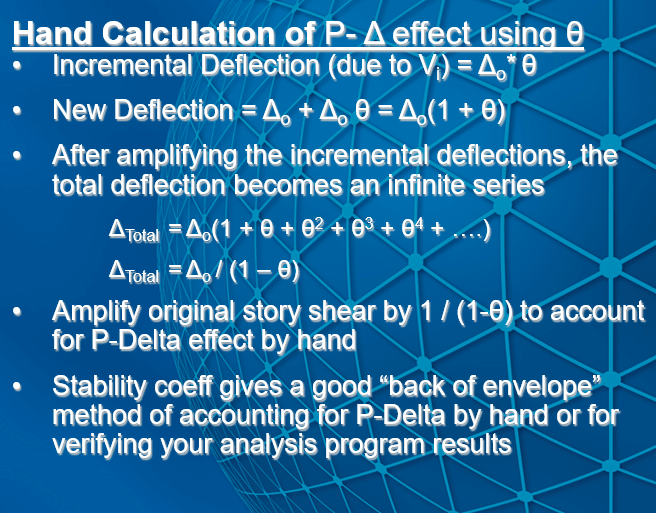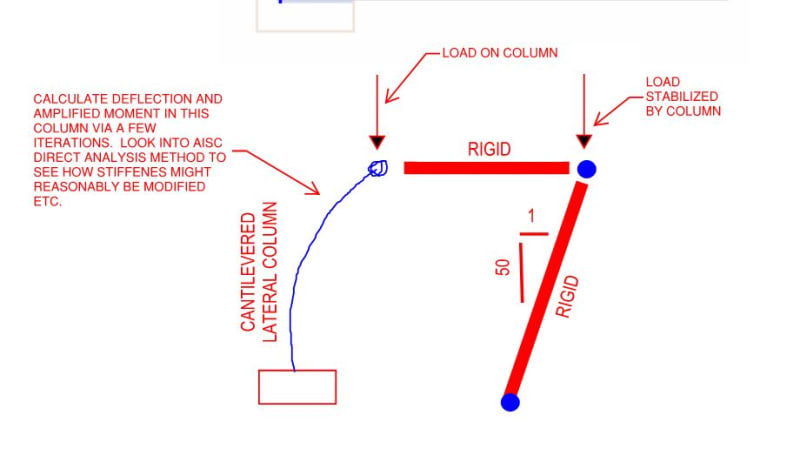Enhineyero
Structural
Hi guys two part question:
1. does anyone know a good resource for simplified calculations for non-linear geometric analysis?
2. Is the second-order effect (P-big delta) moment for a cantilever column with a vertical point load at the tip and is subject to lateral load equal to vertical load times lateral displacement?
1. does anyone know a good resource for simplified calculations for non-linear geometric analysis?
2. Is the second-order effect (P-big delta) moment for a cantilever column with a vertical point load at the tip and is subject to lateral load equal to vertical load times lateral displacement?


